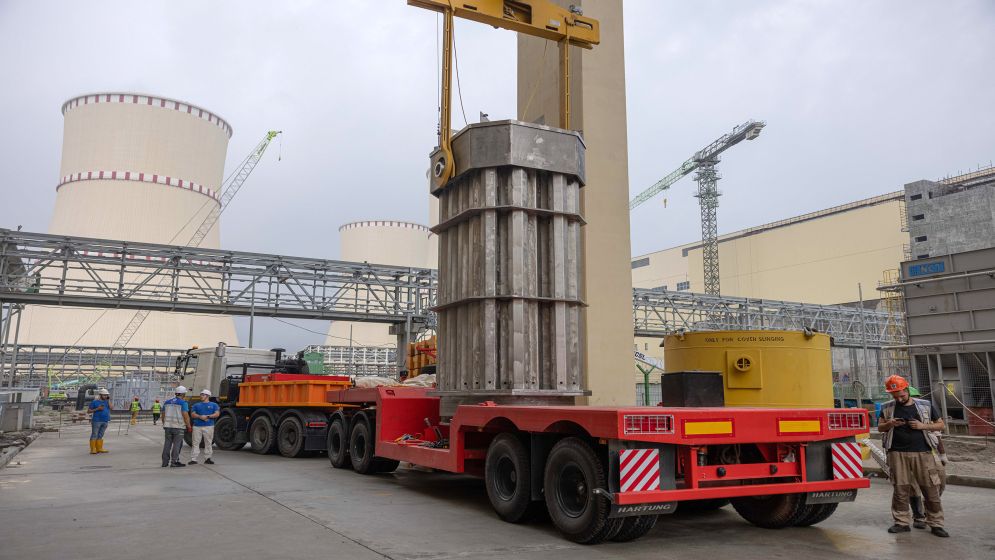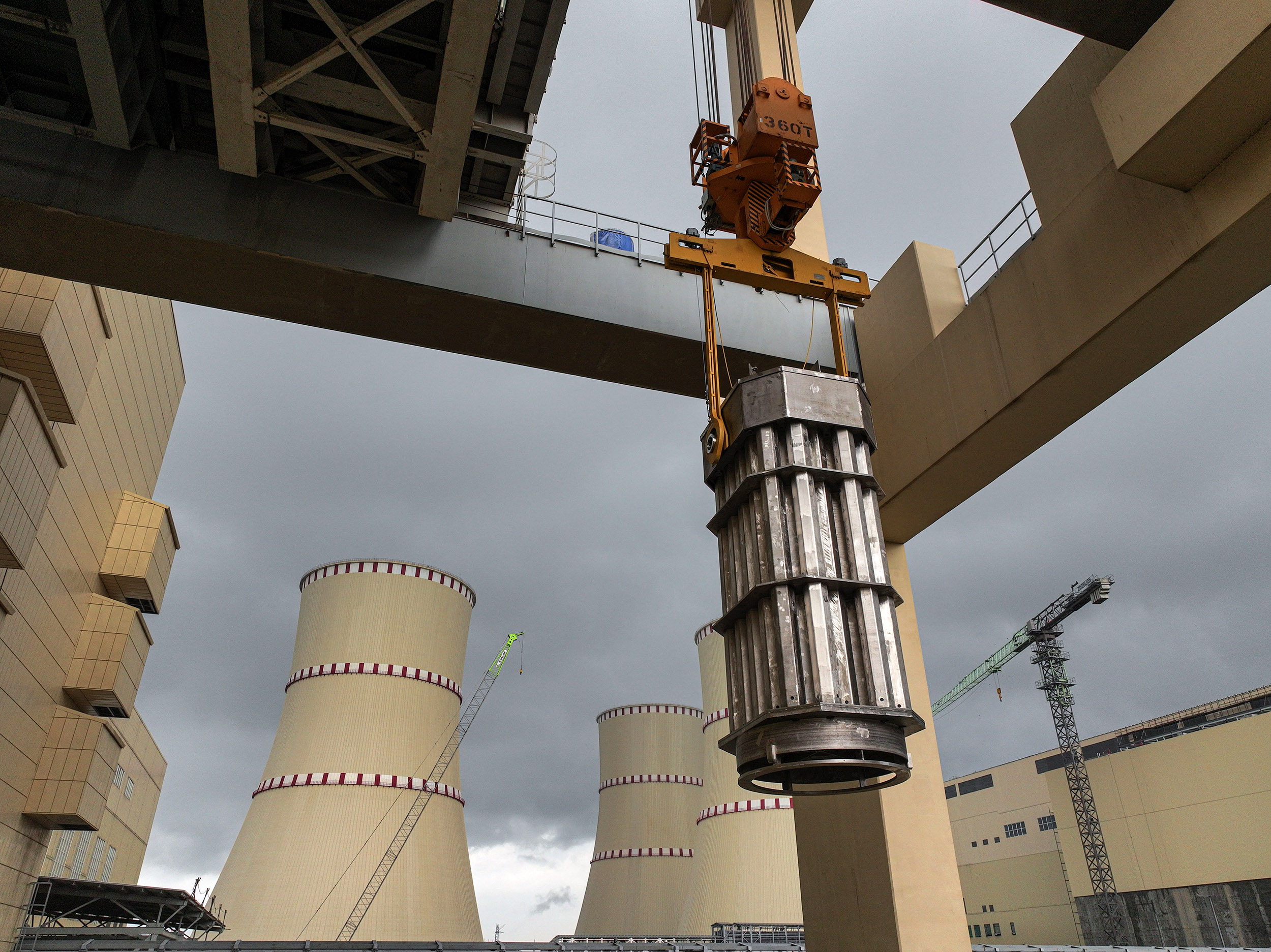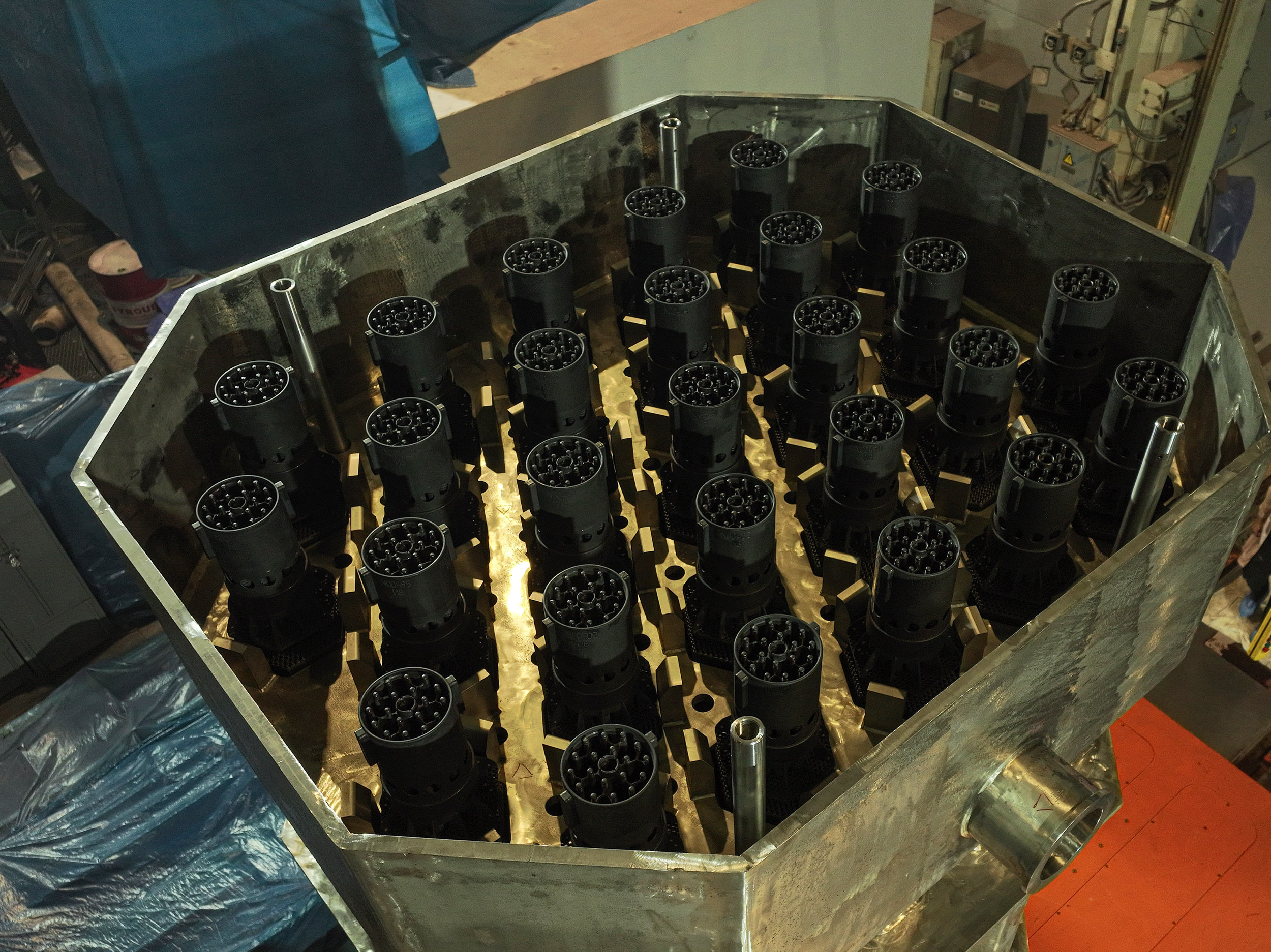Dummy fuel loading starts at unit 1 of Rooppur NPP: A key milestone for physical start-up

Photo Credit: Rosatom
The loading of Dummy Fuel Assemblies (DFAs) into the reactor pressure vessel at Unit 1 of the Rooppur Nuclear Power Plant commenced on Tuesday.
Over the next two weeks, 163 DFAs and 115 Control and Protection System Absorber Rods (CPSARs) will be installed.
The actual nuclear fuel loading will follow once all reactor parameters are verified with the help of the dummy assemblies. Specialists from Atomstroyexport, Atomtechenergo, and Rosenergoatom are overseeing this process.
DFAs are designed to replicate the dimensions, weight, and materials of standard fuel assemblies, but do not contain nuclear fuel.

They are essential for modeling the reactor core's geometry and validating the hydraulic parameters during circulation flushing, as well as cold and hot tests—key steps for ensuring the reactor's safe and reliable operation.
DFAs also facilitate the mastery of handling operations with the refueling machine.
Alexey Deriy, ASE Vice President for Projects in Bangladesh, stated, “As the leading technological corporation in Russia, Rosatom showcases its expertise and extensive experience in creating conditions for the growth of new industries in partner countries.”
“The construction of Rooppur NPP is progressing well, and start-up and adjustment activities at Unit 1 are in full swing. Once operational, the power plant will provide Bangladesh with much-needed electricity for its development,” he added.

Denis Muzlov, Director of Atomtechenergo's Branch in Bangladesh, said, “DFA loading is being conducted around the clock. Loading each DFA into the reactor using the refueling machine in automatic mode takes approximately 25 minutes.”
“Following the completion of the DFA loading, we will prepare the reactor for subsequent circulation flushing and cold and hot tests,” he mentioned.
The Rooppur NPP project is being implemented with technical and financial support from Russia and will include two power units with a combined capacity of 2,400 MW.
The chosen design is the Russian VVER-1200 reactor, an evolutionary Generation III+ model that meets all international safety standards. Rosatom Engineering Division serves as both the general designer and contractor for the project.
—

